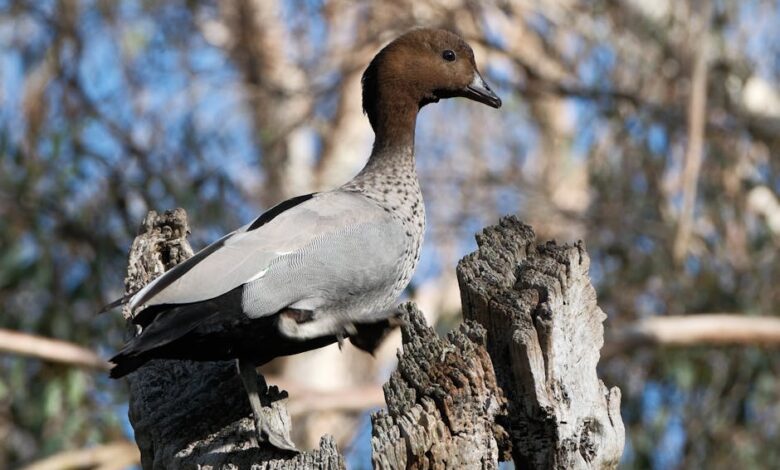The Cradle of Flight Innovation: From Wind Tunnels to Winged Wonders

Imagine a place where the echoes of humanity’s wildest aerial ambitions meet the whispers of distant worlds. Tucked away amidst the gleaming campuses of Silicon Valley’s tech giants, the historic NASA Ames Research Center isn’t just another landmark; it’s a living testament to scientific ingenuity. For decades, this facility has quietly, yet profoundly, pushed the boundaries of what’s possible—from designing the aircraft that defined an era to pioneering the technologies that took us to the stars and even glimpsed entirely new realities.
Recently, a trove of 5,000 images from NASA Ames’s archives offered a rare, unfiltered glimpse into this incredible journey. Stepping into these digital vaults is like time-traveling through America’s scientific frontier, revealing captivating stories of massive wind tunnels, experimental aircraft, groundbreaking space missions, and even the early stirrings of virtual reality. It’s a powerful reminder of vision, perseverance, and our timeless quest to understand the universe.
The Cradle of Flight Innovation: From Wind Tunnels to Winged Wonders
The story of NASA Ames begins not with rockets, but with wings. Founded in 1939 as a West Coast outpost for the National Advisory Committee for Aeronautics (NACA), its primary mission was audacious: to close the United States’ significant gap with Germany in aeronautics research. This wasn’t just about building better planes; it was about building the very infrastructure for innovation.
Bridging the Gap in the Skies
A key motivation for establishing the new lab was the urgent need for massive wind tunnels. At the time, America simply didn’t have the facilities to thoroughly test advanced aircraft designs. The initial response was to build smaller tunnels, capable of simulating speeds up to 300 miles per hour. But the true game-changer was the gargantuan 40-by-80-foot tunnel, designed for full-scale aircraft testing. When it powered up in March 1941, just months before Pearl Harbor, its importance became immediately clear. These wind tunnels weren’t just engineering marvels; they became critical national assets, helping scientists rapidly develop the advanced aircraft that would define Allied air superiority during World War II.
It’s hard to overstate the impact of these facilities. They allowed engineers to test, iterate, and refine designs with unprecedented speed and accuracy, directly contributing to the rapid advancements in aviation that reshaped the world. And the legacy continues today: the NASA Ames Research Center still operates what is considered the world’s largest pressurized wind tunnel, a versatile beast with both subsonic and transonic chambers, essential for testing everything from cutting-edge aircraft and rockets to the next generation of wind turbines.
Pioneering the Cosmos: A Glimpse of Distant Worlds
While Ames started with Earth’s atmosphere, its ambitions soon stretched far beyond. For nearly three decades, from 1965 to 1992, NASA Ames managed the iconic Pioneer missions, spacecraft that became humanity’s initial scouts to the inner and outer solar system. These plucky probes journeyed to the Moon, Venus, Jupiter, and Saturn, sending back our first close-up images and invaluable data from these distant, mysterious worlds.
Beyond managing entire missions, Ames also made crucial contributions to other legendary endeavors. Take Voyager 2, for instance. Launched in 1977, this incredible spacecraft became the only probe to visit all four gas giants—Jupiter, Saturn, Uranus, and Neptune—before ultimately crossing into interstellar space in 2018. The archives at NASA Ames preserve those initial, grainy, yet utterly breathtaking glimpses of strange new worlds, each image a testament to the pioneering spirit of space exploration.
Looking at these vintage photos, you can almost feel the collective awe and excitement of the scientists and engineers who saw them first. These weren’t just data points; they were revelations, fundamentally changing our understanding of our place in the cosmic neighborhood. It’s a powerful reminder of how a research center, initially focused on aeronautics, became a pivotal player in our quest to understand the universe.
Unconventional Visions: Crafting the Future, One Experiment at a Time
NASA Ames has always been a place where convention takes a backseat to curiosity. The sprawling campus itself holds quirky relics, like the skeleton of a hulking airship hangar—a structure so immense it was obsolete even before its completion, yet stands as a monument to past ambitions.
Where Aircraft Took Unorthodox Forms
Over the years, the facility has been a proving ground for some truly odd-looking experimental aircraft. We’re talking about vertical take-off and landing (VTOL) aircraft that defied gravity, innovative jets pushing speed and maneuverability, and advanced rotorcraft that reimagined helicopter flight. These weren’t just designs for the sake of it; they were often foundational experiments, pushing the boundaries of what flight could be. And even today, new, boundary-pushing designs continue to take shape and undergo testing in Ames’s facilities, proving that the spirit of unconventional aviation is very much alive.
Space Art and Future Living
Beyond the hardware, the archives reveal a fascinating glimpse into the human imagination. Awe-inspiring retro illustrations from the Ames collection depict the surreal surfaces of distant planets, NASA spacecraft gracefully descending into alien landscapes, and fantastical renderings of future ring-shaped human habitats floating peacefully in space. These aren’t just technical drawings; they’re vibrant expressions of the optimism and excitement that characterized the space age of the ’70s and ’80s. They show a future not just studied, but dreamed of, with a tangible sense of hope for what humanity could achieve amongst the stars.
Suiting Up for the Future, Digitally and Physically
Perhaps one of the most intriguing aspects of Ames’s history lies in its exploration of human-machine interaction, both physical and virtual. In the 1980s, researchers at NASA Ames worked diligently to develop next-generation space suits, moving beyond the fabric-and-pressure models to something more robust, like the bulbous, hard-shelled AX-5 model. This suit, designed for better mobility and safety, looked straight out of a sci-fi film and was a significant leap forward in astronautical engineering.
Simultaneously, the Human-Machine Interaction Group at NASA Ames was doing pioneering work in another frontier: virtual reality. Their efforts in the 1980s yielded some truly wild-looking hardware, far predating today’s sleek VR headsets. Long before the current AR/VR boom, Ames researchers had already glimpsed the profound potential of this technology. They understood its transformative power, recognizing that its only true limitation was the computing power available at the time. Their early experiments laid critical groundwork for the immersive digital experiences we enjoy today, proving that Ames was not just looking at the next plane, but the next paradigm.
The Legacy Under the Silicon Sky
The NASA Ames Research Center, nestled among the world’s most innovative tech companies, stands as a profound symbol of America’s commitment to scientific exploration. Decades of federally funded research at Ames fueled breakthroughs across aviation, spaceflight, and supercomputing—an enduring legacy that has not only advanced our understanding of the universe but also laid the groundwork for countless technological innovations now woven into our daily lives.
Looking through these archives, it’s clear that Ames isn’t just a collection of buildings and experiments; it’s a crucible where curiosity meets capability, transforming abstract ideas into tangible realities. This invaluable heritage, however, faces an uncertain future as federal grants for fundamental science research encounter deep cuts. It serves as a potent reminder that the pursuit of knowledge—the kind that truly moves humanity forward—requires sustained investment, foresight, and a continued appreciation for the kind of groundbreaking work that has defined NASA Ames for over eight decades. Preserving this legacy means not just remembering the past, but actively investing in the future of exploration and discovery.





